




| Home | Features | Club Nights | Underwater Pics | Feedback | Non-Celebrity Diver | Events | 9 July 2025 |
| Blog | Archive | Medical FAQs | Competitions | Travel Offers | The Crew | Contact Us | MDC | LDC |

|

|
 
 |
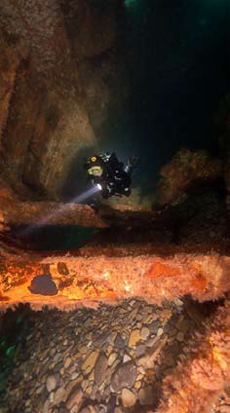 |
ISSUE 8 ARCHIVE - SCAPA FLOWGareth LockGareth Lock recently joined a 'History Week' with Bob Anderson and Kieran Hatton in Scapa Flow. Having been on a couple of dive trips here before, he decided to get beyond these concreted and corroded wrecks and delve deeper into the stories behind them; how they were built; where they had sailed, the characters involved and finally how they ended up where they currently lie.Bob Anderson, the skipper of MV Halton and Kieran Hatton, a technical dive instructor and keen wreck enthusiast provided a fascinating trip with comprehensive briefs, pointing out major parts of the wrecks, where items of interest were likely to lie and clues to those item's locations, in addition to the story behind each ship. The dives were supported by evening lectures which included: "Maritime Architecture and the Influences on Maritime Warfare"; "The Defences of Scapa and the importance it played in both Wars", "Characters of the Naval Battles of World War I and specifically Jutland"; "The Battle of Jutland", and "The Internment, Scuttling and Salvage of the German High Seas Fleet". In addition, they visited the museum at Lyness where the model of the Baden was used to describe what they were likely to see on the wrecks themselves, the naval control centre at the Wee Fea above Lyness, and the Italian Chapel and Barriers the night the dive boat moored up at Burray. |
 |
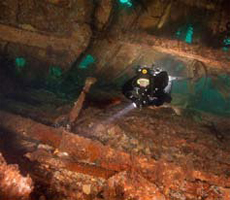 |
BrummerThe Brummer is often considered one of the most memorable dives in Scapa. While the winter of 2008/09 has seen a substantial change in the wreck, she still retains her appeal. Built as a fast attack/minelayer her slender design was built for speed. The forward and midship 5.9" guns are now on the seabed but visible. The bridge section, still the most ornate in the flow, also seems to have a resident seal. She lies in 22-36m.Coln IIA 5000 tonne Dresden II class ship at 140m long, lying in 36m and the top around 22m. The Coln II is a classic Scapa wreck with plenty to see including: 5.9" guns still in place at the stern; collapsed superstructure teeming with life; plenty of swim-throughs and, for those with the skills and inclination, there are excellent penetration opportunities. |
 |
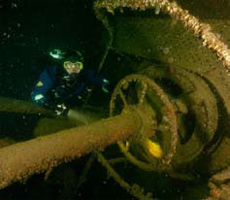 |
DresdenSister to the Coln and the namesake of the class, she has a large crest on the bow to signify her status. The forward deck has peeled open offering a fantastic opportunity for divers to be able to see into the bowels of the wreck without entering an overhead environment. The stern is still completely intact with 5.9" guns mounted on. Behind this, the officer accommodation which is complete with bath tub! The Dresden lies in 18-36m.KarlsruheWhilst the most broken of the cruisers she still retains many of her guns, allowing divers an opportunity to see the forward 5.9" guns on a cruiser sitting side by side as they would have been in World War 1. Again, the fact that she has opened up can give the diver an opportunity to look into parts of the interior that it is not possible to reach on the other cruisers. Laying between 14 and 26m it is easy to spend a lot of time on this wreck. |
|
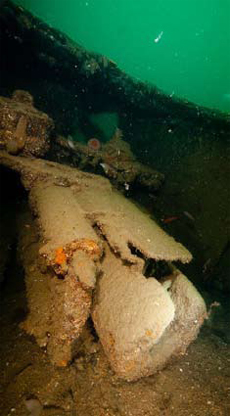 |
Konprinz WilhelmThe shallowest of the 3 battleships she is also the one that offers one of the most memorable dives. Seeing the big 12" stern guns of this battleship really gives an impression of the size and purpose of these ships. These guns were the cruise missiles of their day. Many people say that to see the most shipshape part of the battleships means heading towards the seabed, however, the upper parts can make a fascinating scenic dive in their own right. 16-38m.MarkgrafThe Markgraf is the most upside down of the battleships, but she is also the most intact. The salvage operation caused comparatively little damage to this mammoth vessel. Memorable sights on the "to do" list are the bow rising near vertically out of the seabed and the two giant rudders dominating the stern. It is also possible to swim round and look into the admiral's quarters through the intact and in place portholes at the stern. 22-45m.TabarkaAlthough the Tabarka wasn't sunk as part of the scuttling, it does play an important part in the defence of Scapa Flow, having been sunk in Kirk Sound (now the location of Churchill Barrier 1) after the sinking of the Royal Oak, before being raised and re-sunk in Burra Sound where she now lies. This wreck is still a classic and because of the relatively shallow depth, means it is pretty much accessible to everyone. |
 |
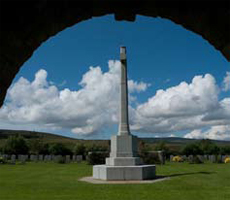 |
Nearest recompression chamber:Orkney Hyperbaric ChamberTel: 01856 888 000 |
|
Previous article « To Catch A Shark Next article » Trying Not to be the Tosser On The Liveaboard Back to Issue 8 Index |